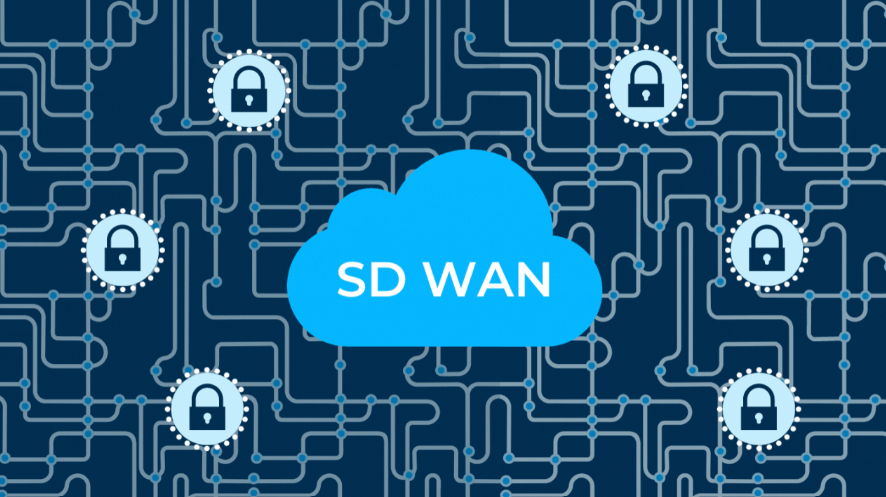SD-WAN is a revolutionary technology that offers many benefits. It transforms network management, offers real-time adjustments, and eliminates costly MPLS line installations by utilizing existing broadband connections for secure networking.
It also reduces costs by leveraging low-cost local Internet access and direct cloud access. An advanced SD-WAN device also optimizes traffic by monitoring application performance requirements in real-time and automatically steering to the best path.
Improved Application Performance
No more branch office blues. SD WAN meaning: streamlined data paths for remote users. It intelligently routes traffic around congested links, delivering apps at lightning speed boosting productivity and user satisfaction across your entire network.
SD-WAN technology improves application performance by dynamically routing data over the most effective path based on real-time network conditions. IT teams can provide high-quality WAN connectivity with low latency and packet loss that supports business applications.
This is achieved through a software-based device that monitors WAN links and provides custom performance statistics via a single management portal. This enables IT to change paths to priority applications, add new sites, perform firmware and software upgrades, and flex bandwidth from a central location.
Unlike traditional WANs that require backhauling traffic to and from the data center, SD-WAN technology can direct internet-based connections directly to branch offices. This helps eliminate data center bottlenecks and increases the availability of cloud apps/services.
In addition, SD-WAN enables direct access to leading IaaS providers, SaaS application acceleration, and multi-cloud integration, which helps simplify cloud migration. This is especially important given the growing number of businesses that rely on cloud-based applications for collaboration, productivity, and more. This reduces costs and speeds up the time to market for new applications.
Reduced Costs
Regarding IT costs, removing the WAN as a bottleneck saves significant time and money. With SD-WAN, organizations can use readily available broadband Internet circuits, 4G/5G, and MPLS to connect users to applications securely.
In addition, SD-WAN enables application optimization. This feature identifies sensitive applications and routes them over high-performing links, minimizing latency and packet loss. This results in a better end-user experience.
Finally, centralized management and automation help reduce costs. A centralized controller can implement policy changes and push them to all network devices. This creates a simplified, consistent deployment and operation model, reducing IT management overhead.
Traditional WAN networking approaches require traffic created in the branches to be backhauled to a centralized internet security point in a data center, which adds latency and increases cost. SD-WAN offers more flexible WAN connectivity, which enables UCaaS traffic to be dynamically routed over Internet access channels with optimal performance. This helps lower costs by avoiding costly backhauling of voice and video over long distances. It also improves performance by reducing bandwidth consumption through WAN optimization.
Improved Security
The security benefits of SD-WAN technology include reducing the attack surface for cloud connectivity and better application performance. Traditional WAN architectures backhaul traffic from branch offices over private networks to a central internet gateway, increasing network congestion, slowing productivity, and hindering user experience.
An SD-WAN solution enables businesses to prioritize application traffic so that lifeblood applications are always given the bandwidth they need. It also allows the business to automatically redistribute traffic based on flash conditions, such as a broadband service provider going down or the congested WAN.
Moreover, an SD-WAN can provide a failover mechanism with sub-second failover to avoid interrupting essential business communications. This helps avert downtime for employees and customers and protects data privacy and business continuity.
Businesses can manage the SD-WAN from a centralized controller, which allows administrators to build and push policies across the entire network. This creates a simplified, consistent deployment model and reduces management costs and network complexity. The intelligent path control that SD-WAN offers enables any transport service, including broadband Internet circuits, MPLS, 4G/5G wireless, and more, to connect users to applications securely.
Scalability
The scalability of SD-WAN technology is one of its key differentiators. It decouples networking hardware from the control mechanism, allowing organizations to set up and connect new sites quickly. In addition, it provides a highly secure overlay network that supports real-time data statistics for optimal application routing.
For example, if the quality of an internet channel decreases, SD-WAN can redirect voice traffic to a backup channel without compromising SLAs. This enables businesses to save money and increase productivity by avoiding costly outages.
SD-WAN also offers a cost reduction for bandwidth usage by directing web traffic to the internet instead of private MPLS circuits. This offloads web and low-priority traffic, reducing WAN costs by freeing up MPLS bandwidth and enabling more data to be transmitted at higher speeds.
Additionally, SD-WAN can offload internet traffic to local points of presence at the branch offices, reducing the load on expensive private circuits. The ability to route traffic based on application priorities and quality of service (QoS) marks enables network administrators to optimize their connectivity investments. Finally, SD-WAN solutions typically support a cold standby feature, allowing them to be activated immediately in an emergency.
Flexibility
A significant benefit of SD-WAN is the flexibility it provides. Organizations can route traffic over multiple internet connections instead of a single MPLS connection, significantly cutting costs and reducing reliance on expensive bandwidth.
SD-WAN can monitor WAN links via probes to decide which path to send data over, selecting the highest quality link based on factors like latency, jitter, and packet loss. It can also determine if a particular application is sensitive to certain network conditions and automatically shifts the data flow to avoid poor performance.
The centralized management capabilities of SD-WAN allow IT teams to easily configure and monitor their branch networks, eliminating the need for specialized on-site staff. This enables fast, zero-touch provisioning for new branches to be online in just a few days.
In addition to reducing costs and increasing scalability, SD-WAN makes it easier for organizations to connect remote users directly to the cloud, significantly improving productivity and user experience. With the right solution, this can be done securely over public internet connections with minimal infrastructure requirements.
